When we think of Japanese art, we often conjure images of delicate watercolor paintings or intricate calligraphy. But there’s another style that has made a major impact on the art world, both in Japan and around the globe: ukiyo-e or Japanese woodblock art. These colorful and dynamic prints were born in the Edo period and quickly became a sensation among the masses. But what you may not know is that their influence extends far beyond Japan’s borders. From inspiring Impressionist masters to influencing contemporary graphic design, ukiyo-e has left an indelible mark on the art world. In this article, we’ll dive into the global impact of ukiyo-e art, exploring its origins, its reach, and its role in shaping the art world as we know it today.
The Origins of Ukiyo-e Art
While we now know ukiyo-e art as a global phenomenon, it has humble beginnings that are deeply rooted in Japan’s Edo period. Ukiyo-e, which translates to “pictures of the floating world”, originated as a form of mass-produced art that depicted everyday life and entertainment in Edo (now Tokyo). Created using woodblock printing techniques, these prints were affordable and accessible to the general public, which contributed to their massive popularity.
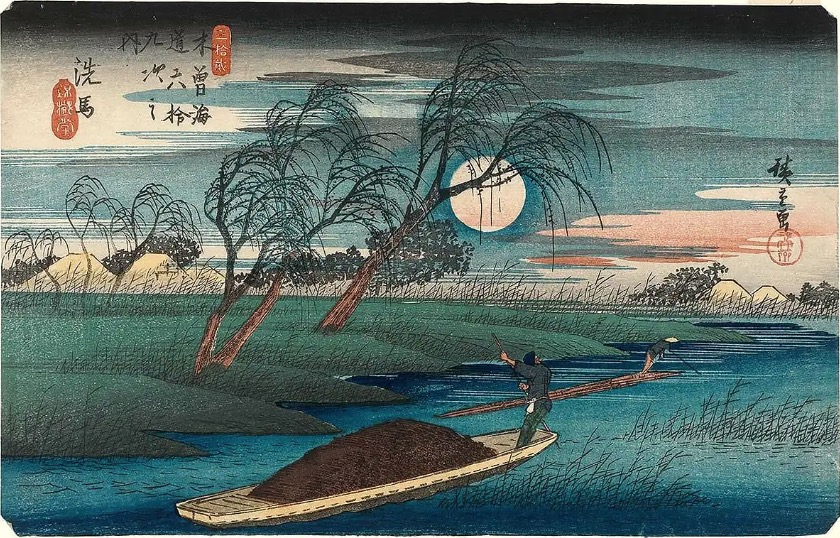
Ukiyo-e was heavily influenced by popular culture and was often used to depict kabuki actors, courtesans, and landscapes. The style evolved over time, with artists experimenting with different techniques and subjects. It wasn’t long before ukiyo-e caught the attention of Western artists, who were drawn to its vivid colors and dynamic compositions. In a way, ukiyo-e acted as a bridge between Japanese and Western art, inspiring new styles and movements along the way.
But how exactly did ukiyo-e make its way into the global art scene? Below we explore the ways in which ukiyo-e transcended borders and left an imprint on the world stage.
Ukiyo-e Art Goes Global
Ukiyo-e quickly gained popularity beyond Japanese shores thanks to the influence of global trade and cultural exchange. By the 19th century, ukiyo-e prints had made their way to Europe and the United States, where they became highly sought after by collectors and artists alike. Western artists were particularly enamored with ukiyo-e’s bold use of color, flattened forms, and strong compositional elements.
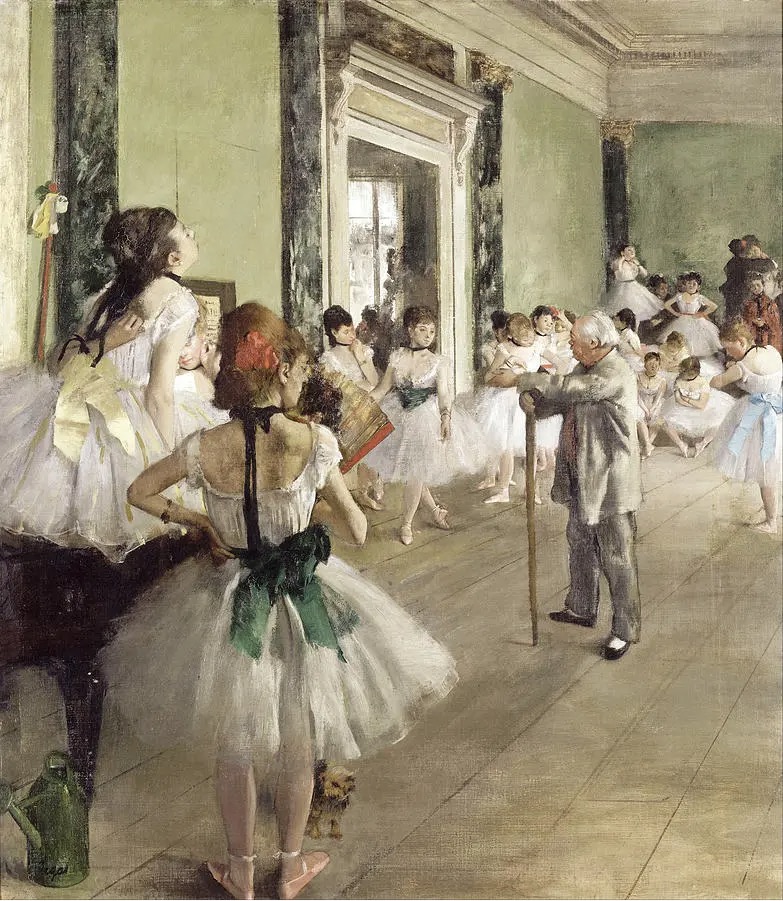
One of the most significant ways ukiyo-e impacted the global art scene was its influence on the Impressionist movement. French artists such as Edgar Degas and Pierre-Auguste Renoir were inspired by the flatness of ukiyo-e prints, and incorporated similar techniques into their own work. This can be seen in Degas’ “The Ballet Class,” (see left) which bears striking similarities to ukiyo-e depictions of kabuki actors.
Ukiyo-e also played a role in the development of Art Nouveau, a decorative art style that emerged in Europe in the late 19th century. The sinuous lines and organic forms of Art Nouveau were influenced in part by ukiyo-e’s naturalistic depictions of landscapes and flora.
Overall, the global impact of ukiyo-e cannot be overstated. Its influence can be seen in a wide range of art styles and movements, and continues to be celebrated by art lovers around the world.
The Influence of Ukiyo-e on Western Art
In addition to its impact on Japanese art, ukiyo-e had a significant influence on Western art as well. During the late 19th century, when ukiyo-e was being exported to the West, it caught the attention of many Western artists who found inspiration in its unconventional style. The naturalistic depictions of landscapes and flora, as well as the unique perspective and composition techniques used in these prints, influenced the development of Art Nouveau, a decorative art style that emerged in Europe during this time. The sinuous lines and organic forms of Art Nouveau were in part a response to the influence of ukiyo-e.
Ukiyo-e prints also played a role in the development of Impressionism, another important movement in Western art. The Impressionists were drawn to ukiyo-e’s use of color and light, as well as its emphasis on fleeting moments and everyday life. Many Impressionist artists, such as Edgar Degas and Mary Cassatt, collected ukiyo-e prints and incorporated elements of the style into their own work.
Today, the influence of ukiyo-e can be seen in a wide range of art styles and movements, from the bold lines and flat colors of pop art to the intricate patterns and organic forms of Art Nouveau. Its impact on Western art continues to be celebrated by art lovers around the world, making ukiyo-e a truly global art form.
Looking forward, the influence of ukiyo-e on modern art and design is likely to continue. As artists and designers seek out new sources of inspiration and look to the past for creative ideas, ukiyo-e’s unique style and techniques are sure to remain relevant and influential.
Ukiyo-e in the Modern World
As ukiyo-e continues to captivate audiences around the world, it is not surprising that its influence can be found in modern art. From contemporary manga and anime to graphic novels and advertising, ukiyo-e’s striking colors and dramatic compositions still make an impact. In fact, a number of contemporary artists have drawn inspiration from ukiyo-e prints, incorporating its visual language into their own works.
Read more: Breaking Boundaries: Blending Tradition and Modernity in Japanese Art Prints
One of the most interesting developments in recent years is the fusion of ukiyo-e with new technology. Artists have found ways to manipulate traditional techniques to create digital prints and animations, bringing the style into the 21st century. As a result, ukiyo-e-inspired art can now be seen in video games, virtual reality experiences, and even on social media.
Perhaps one of the most direct examples of ukiyo-e’s influence on modern art is in the work of Japanese artist Takashi Murakami. Murakami has created a unique style that combines elements of manga, anime, and ukiyo-e, resulting in vibrant and playful works that challenge traditional distinctions between high and low art. His work has been exhibited in galleries and museums around the world and has become increasingly popular with a younger generation of art enthusiasts.
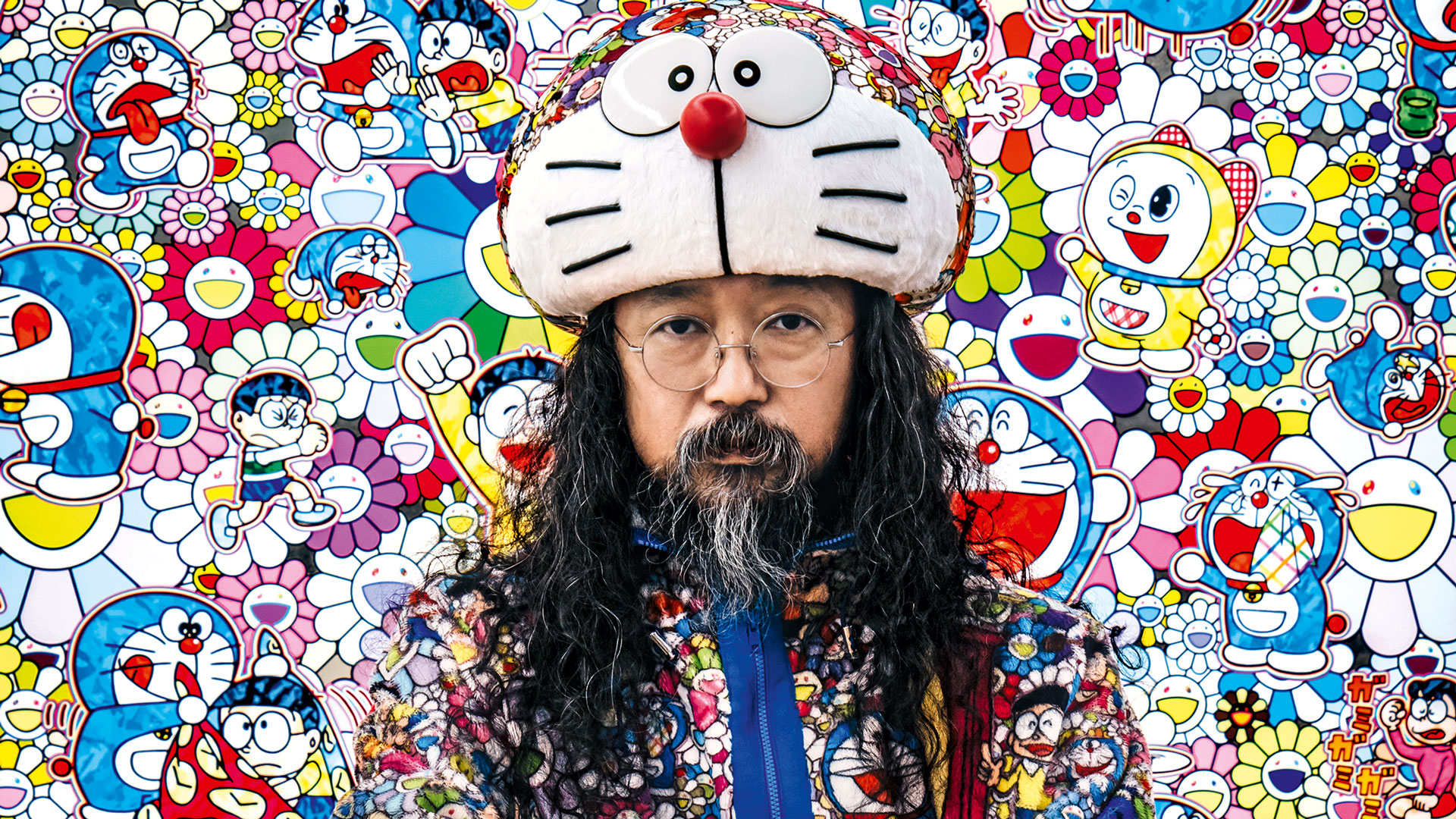
Another example is the “The Great Wave off Kanagawa” which is undoubtedly one of the most recognizable and iconic woodblock prints ever created. This masterpiece by Katsushika Hokusai depicts a towering wave threatening boats in the foreground while Mount Fuji looms majestically in the background–part of his “The Thirty Six Views of Mount Fuji” series.
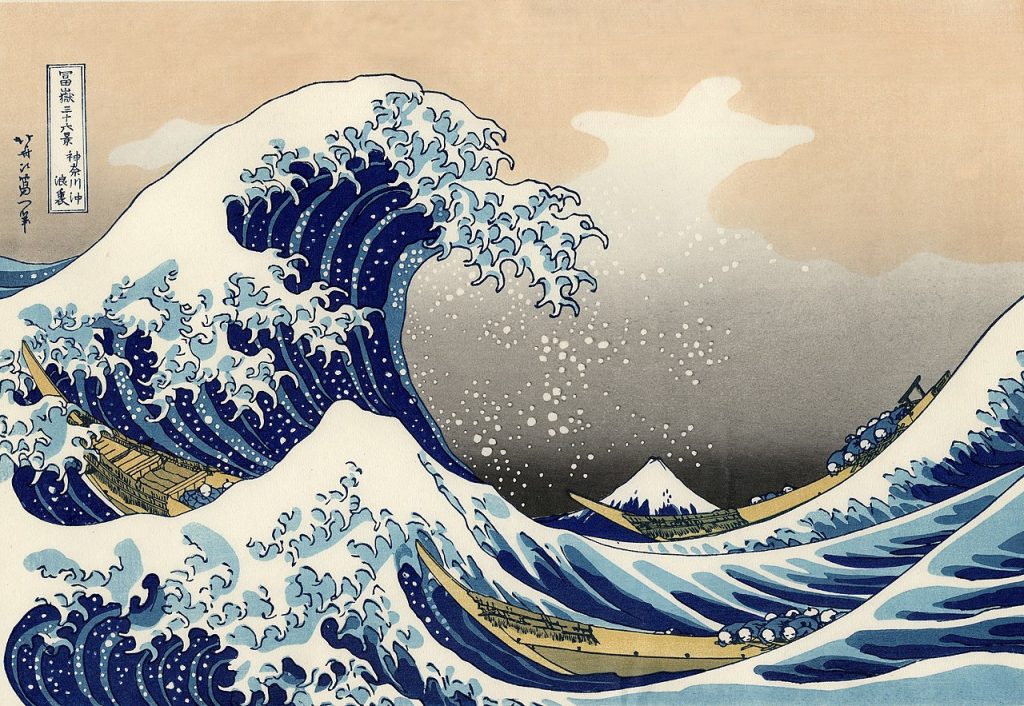
Looking forward, it is clear that ukiyo-e will continue to inspire artists and designers in new and innovative ways. Its bold colors, innovative techniques, and dramatic compositions make it a timeless form of art that transcends cultural and historical boundaries. As a result, ukiyo-e will undoubtedly continue to shape the world of art for generations to come.
Ukiyo-e art may have originated in Japan during the Edo period, but its influence extends far beyond its shores. We explored its global impact, from its origins as a popular art form to its wide-ranging influence on Western art. Today, ukiyo-e continues to inspire and influence artists worldwide, leaving an indelible mark on the art world. As we move further into the modern era, we can harness the power of this art form to create new works that capture its energy and dynamism. So why not take a page from the ukiyo-e masters and let their imaginative and colorful prints spark your own creativity? After all, as the great Hokusai once said, “From the midst of fire, wind, water, and earth, come life’s gentlest and most enduring images.”
Are you looking to start collecting ukiyo-e art? Be sure to read our comprehensive guide: Collecting Ukiyo-e Art: A Guide for Beginners.
Read More:
- 11 Most Influential Ukiyo-e Artists: Masters of Japanese Woodblock Prints
- 6 of the Most Prominent Mount Fuji Ukiyo-e Art Prints
- The Thirty Six Views of Mount Fuji: An Artistic Journey through Hokusai’s Magnificent Landscapes
- Where Can I Buy Ukiyo-e Art? Here’s where to find those rare prints
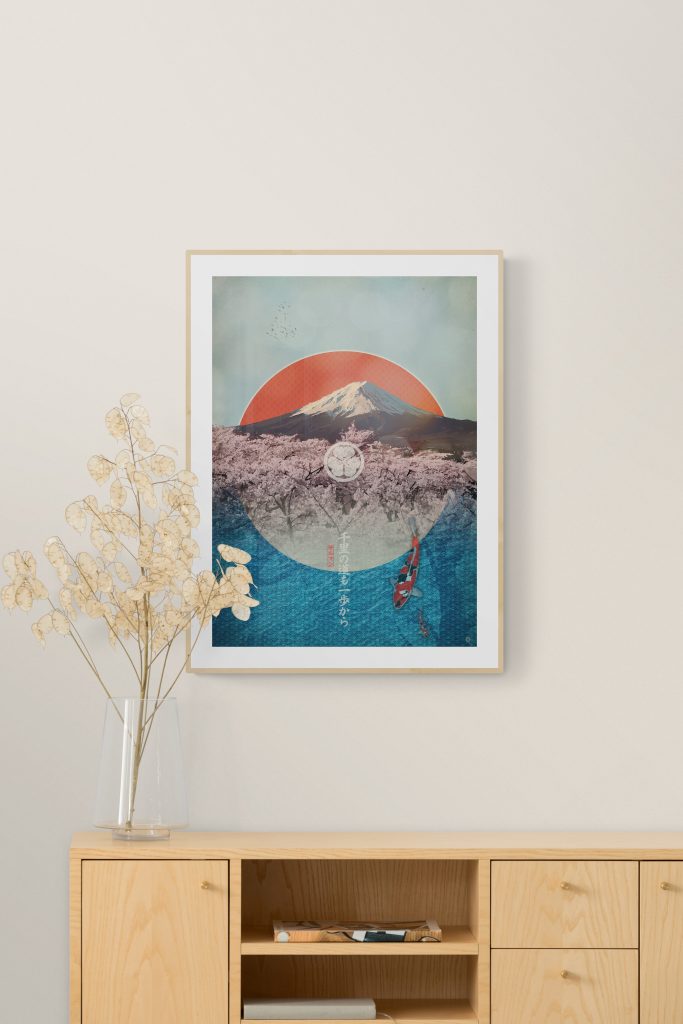
At the Art of Zen we have a wide selection of original Japanese style art prints such as the Fujimar art print above from our Mount Fuji wall art collection. Also, check out our collection of Japandi wall art and add some zen to your space with some art from the Art of Zen shop.
Photo credit: the featured image at the top is from the One Hundred Famous Views of Edo by Hiroshige.
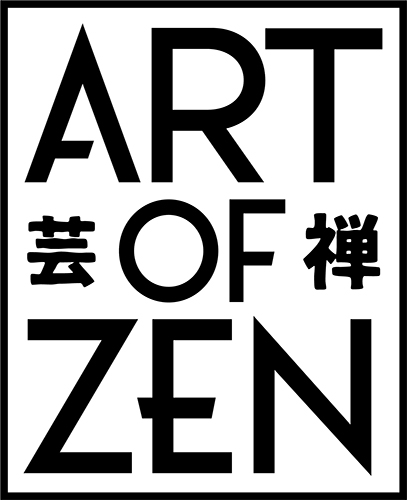

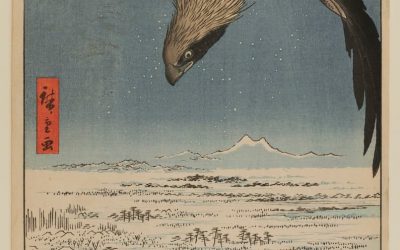
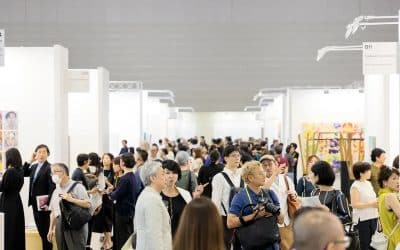
0 Comments